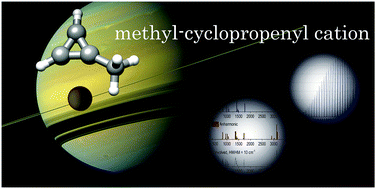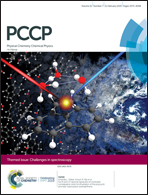State-of-the-art computation of the rotational and IR spectra of the methyl-cyclopropyl cation: hints on its detection in space†‡
Abstract
Recent measurements by the Cassini Ion Neutral Mass Spectrometer demonstrated the presence of numerous carbocations in Titan's upper atmosphere. In [Ali et al., Planet. Space Sci., 2013, 87, 96], an analysis of these measurements revealed the formation of the three-membered cyclopropenyl cation and its methyl derivatives. As a starting point of a future coordinated effort of laboratory experiments, quantum-chemical calculations, and astronomical observations, in the present work the molecular structure and spectroscopic properties of the methyl-cyclopropenyl cation have been investigated by means of state-of-the-art computational approaches in order to simulate its rotational and infrared spectra. Rotational parameters have been predicted with an expected accuracy better than 0.1% for rotational constants and on the order of 1–2% for centrifugal-distortion terms. As for the infrared spectrum, despite the challenge of a large amplitude motion, fundamental transitions have been computed to a good accuracy, i.e., the uncertainties are expected to be smaller than 5–10 wavenumbers.

- This article is part of the themed collection: Challenges in spectroscopy: accuracy vs interpretation from isolated molecules to condensed phases


 Please wait while we load your content...
Please wait while we load your content...